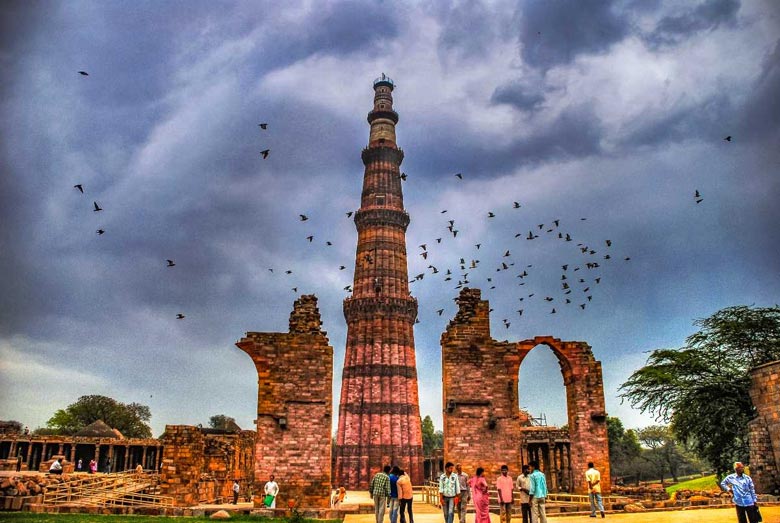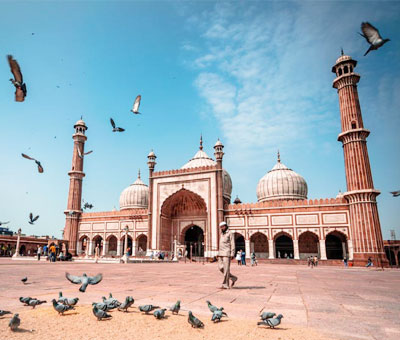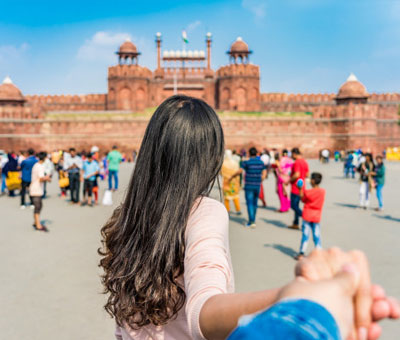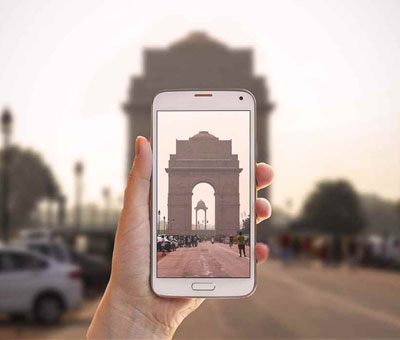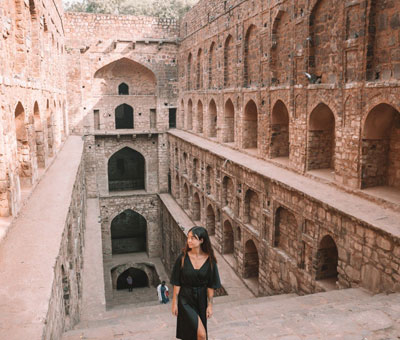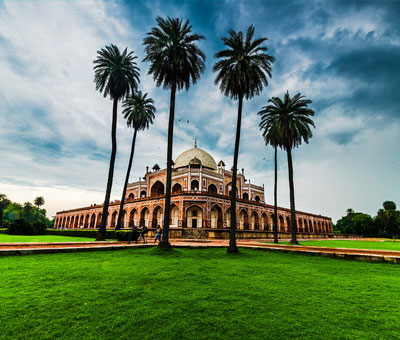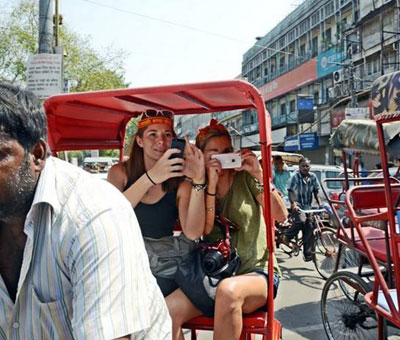Art, Museum and Galleries in Delhi
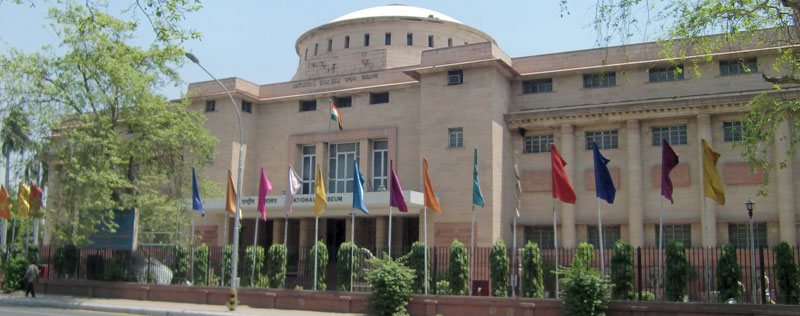
National Museum Delhi
When the British built their grandiose new capital, they didn’t think it necessary to build a single museum or gallery in New Delhi. Today, Delhi has over 20 museums and dozens of art galleries. Together, they provide a visitor to the city with an excellent idea of the wealth and variety of traditional and contemporary Indian art. What follows is a detailed description of the major museums and galleries, and a listing of those which have a more specialised appeal. Things To Do in Delhi…
The National Museum: For a museum that was built only in 1960, the National Museum has an extraordinarily rich collection, continually being added to (open 10am-5pm, closed Mondays). Its nucleus was an exhibition that was put up in Burlington House in London in 1947-48, of some of the finest paintings, sculptures and decorative objects from museums all over the country.
The collections begin, appropriately enough, with prehistory, going on to the `classical” period of Indian art from the 3rd century BC to the 17th century (when sculpture using stone and bronze flourished), then on through galleries of miniature painting, textiles, decorative art, arms, Adivasi art, Central Asian and pre-Columbian antiquities, costumes and musical instruments. There are also special galleries with rotating exhibits from the museum’s own collections, or on loan from foreign museums. Things To Do in Delhi…
Start at the first gallery on the left which concentrates on prehistory and protohistory, tracing the evolution of humans in India from half a million years ago to around 2000 BC, the later period covering the Harappan Culture which appeared around 2500 BC in Mohenjodaro and Harappa, now in Pakistan. The finds at Mohenjodaro, exhibited here reveal a remarkable degree of urban planning, a high level of material comfort and links with other Middle Eastern cultures. Of particular interest are the finely sculpted toys, ceramics, jewellery and small figures, and seals inscribed with a script that is still to be deciphered.
The next gallery is an introduction to first historic periods of Indian art, notably during the reigns of the Maurya (3rd century BC), and Sunga (2nd century BC) dynasties. The Mauryan period, during which the great emperor Ashoka reigned, is famous for its monumental pillars topped by animal capitals. Ashoka also inscribed edicts on rocks, addressed to his people and laying out his moral code; a bronze replica of one of them is in the front garden of the museum.
Delhi Tour Packages
Pricing and Itinerary
Three major Indian schools of sculpture of the 1st to 3rd century AD, from North, South and Central India, are represented in the next gallery. Outstanding here are a standing Bodhisattva in speckled red sandstone, the Buddha heads in the distinct Greco-Roman style of Gandhara in North India (an area conquered by the Greek during the time of Alexander), and some superb carved slabs and friezes depicting scenes from everyday life, from the ruins of Nagarjunakonda in South India, an important centre of Buddhism at the time. Things To Do in Delhi…
To the left of the previous gallery are the Gupta galleries. These contain magnificent sculptures from a period (4th to 6th century AD) renowned for its monumental yet delicate style. Things To Do in Delhi…
The early medieval galleries (6th to 12th century AD) which follow after the Gupta gallery, are notable for the stone images of the Pala and Sena dynasties of eastern India, the carved lintels from the great South Indian kingdom based at Hampi, and the Pallava sculptures from Mamallapuram.
Following these are two dedicated galleries on the ground floor — the Bronze gallery and the Buddhist gallery. The bronze Chola sculptures (10th century), especially the dancing four-armed Nataraj figures (replicas of varying quality of these are sold in souvenir shops all over India) are full of rhythm and grace and an almost mesmeric power. Things To Do in Delhi…
The Buddhist gallery, opened in 1990, has as its prized exhibit Buddha’s relics unearthed in Piprahwa in Uttar Pradesh in 1972. But perhaps more compelling are the Buddha sculptures in different styles — the Apollo-like Gandhara head, the classically graceful sculpted scenes from Buddha’s life from Sarnath, and two most unusual stucco heads from Central Asia. Things To Do in Delhi…
The new jewellery gallery has a sumptuous display of gold and gems, dating back to around 2500 BC. The plain gold Harappan pieces make an interesting contrast with the more ornate Mughal designs incorporating pearls and emeralds.
The first floor galleries have permanent exhibitions of miniature paintings, manuscripts and Central Asian antiquities, as well as special exhibition rooms. Things To Do in Delhi…
The Central Asian antiquities in two galleries on this floor have attracted scholars and art historians from all over the world. They are the fruits of three expeditions made by Sir Aurel Stein between 1900-16, along the ancient Silk Route to China— an area that was an extraordinary meeting place of peoples, cultures, arts and religions, as is borne out by the sculptures, coins, silks, murals and ceramics dating from the 3rd to the 12th century that he found in the region. Things To Do in Delhi…

Art in Delhi
The History of Indian Painting gallery to the left is the pride of the National Museum — the largest and richest collection of Indian miniatures anywhere in the world. Originally introduced into India by Persian artists at the courts of the Mughal emperors, there came into existence several distinct schools of miniature painting. Richly detailed, incredibly fine and with jewel-like colours, they depict a variety of themes• animals and plants, episodes from myths and legends, scenes from court life, portraits. Things To Do in Delhi…
These galleries also have the quaint Company School paintings (18th and 19th centuries), the work of Indian artists who painted subjects appealing to European tastes, and the richly decorative Thanjavur paintings from South India, many of them on glass, which gives them a marvellous translucence.
The Manuscripts section with its large collection of manuscripts on parchment and palm leaf, many of them beautifully illuminated, presents an impressive review of the art of the book in India. Of particular note is a fine collection of exquisitely calligraphed, illuminated Qurans, and a beautiful edition of the Baburnama. Things To Do in Delhi…
The second floor galleries are devoted to anthropology, Pre-Columbian art, decorative and applied arts, especially in textiles, metal and jade, arms, and wood carving.
The Anthropological galleries: Centre stage here is given to the remarkable Verrier Elwin collection of Adivasi art — from the northeastern states of Nagaland and Arunachal Pradesh and from eastern and central India. The collection of costumes, jewellery, wood carving, textiles, and objects of daily use, as well as photographs and charts, gives an idea of a great variety of peoples who inhabit India.
The Arms Gallery: Dating from the 17th century, the arms collection includes battlefield as well as ceremonial arms. Many are exquisitely worked, set with jewels or ivory, and chased in gold.
Wood-carvings gallery: The collection includes intricately carved fragments of wooden temples from Gujarat, shrines, door and lintels with figures in bold relief, and carved panels from temple chariots in South India.
Decorative Arts gallery: Textiles have pride of place here — embroidered Kashmir shawls in the finest wool, fine muslin, heavily brocaded saris and court costumes. There are also fine examples of Mughal jade, ritual lamps in metal, old coins, and samples of Tort ornamental calligraphy.
Pre-Columbian gallery: The gift of an Indian art dealer who had settled in New York, Nasli Heeramaneck, this is an exceptional collection beginning from 900 BC and covering successive cultures on the American continent before the arrival of Columbus. It includes Mayan terracottas, Inca metalware and wooden objects, as well as examples of the art of North American Indian tribes.
Gallery of Musical Instruments: This collection of over 300 items was donated by the sarod player Sharad Rani. It has a large range, with instruments coming from Tamil Nadu to Kashmir.

The Railway Museum
The Railway Museum: A must for rail buffs and those with children in tow. This delightful museum’s star exhibits include the Fairy Queen, the oldest locomotive in the world still in working order, and over 20 other vintage locomotives and carriages, most of them parked in the 4-hectare (10-acre) railway yard in the museum, laid out with tracks of different gauges. They include the Prince of Wales saloon coach (1876), the gleaming white Viceregal Dining Car (1889) and the Maharaja of Mysore’s saloon, all with their splendid original fittings intact.
There are a number of oddities on display. One is an early 20th-century locomotive from the Nizam of Hyderabad’s railway, sliced in half so that its engine can be examined; another is a two-tier van, complete with sunshades, built to accommodate some 200 sheep; and there’s also a monorail steam engine which ran on a single track with an adjacent wheel running on the road outside.
There is also a toy train on which children can ride around the yard; and in the display galleries inside are models of different types of trains used by the Indian Railways, teak furniture and fittings from old coaches, station clocks, and signalling equipment (open 9.30am-7pm, April to September; 9.30am-5pm, October to March; closed Mondays).
Nehru Memorial Museum and Library: This is dedicated to India’s first Prime Minister, Jawaharlal Nehru, who lived in this house for 16 years until he died in 1964. Known as Teen Murti it was originally built for the British commander-in-chief and is a fine example of the Lutyenesque imperial architecture. The 16-bedroom house, with 11 hectares (28 acres) of impeccably tended lawns, shrubbery and rose gardens, has been preserved in all its colonial splendour — Burma teak panel-ling, solid brass fittings and a copper banister. The rooms too are as Nehru left them — and this private ambience is what makes the museum particularly attractive, giving an insight into the kind of man Nehru was — austere yet elegant. The rooms overflow with well-thumbed books, and bowls of roses — he wore one every day in his buttonhole.
The galleries of photographs are a record of the world figures who were Nehru’s contemporaries, as well as a visual introduction to the history of the freedom movement in India. Next to the museum is the library, which has an excellent collection of private papers, books and microfilms relating to modern Indian history. The house is open 10am-4.45pm, closed Mondays, and a son et lumiere show is held in the gardens every evening (except during the monsoon).
Indira Gandhi Memorial Museum: Prime Minister Indira Gandhi’s bungalow at I Safdarjang Road has been, like her father’s residence, preserved as a memorial. There are well-laid-out exhibitions and a number of rooms kept as she left them. In the garden, the spot where she was assassinated is marked by a glass walkway (open 9.30am-5pm, closed Mondays).
Tibet House Museum: A small but fascinating museum, representing the best of the Tibetan arts and crafts tradition, which draws on Chinese, Indian and Nepalese traditions and indigenous styles (open 9.30am-5pm, Monday—Friday). The museum, presided over by a scholarly lama, has an especially line A collection of old thangkas — painted al prayer banners which used to line the walls of monasteries in Tibet. They are from all parts of Tibet, and date from the 15th to the 18th centuries.
The jewellery exhibits include earrings, belts, purses, lockets, and hair ornaments in silver studded with giant corals and turquoise. On the floor above is a library with rare manuscripts, and on the ground floor a shop with a small number of antiques for sale, as well as good replicas of some of the jewellery and ritual objects displayed upstairs, woven textiles and herbal medicines.
Sanskriti Museum of Indian Terracotta and Museum of Everyday Ad: Two museums next door to each other. The first has a large collection of figures, tiles, pots and reliefs. The second is a small but enchanting collection of objects ranging from the icons and statues found in family altars, to decorative combs, mirrors and toiletry objects, and traditional kitchen utensils. The owner, O.P. Jain, has scoured the villages and towns of India to create these collections and some of his prize exhibits have been rescued from junkyards where they had been sold as scrap. Both museums are open 10am-5pm, closed Mondays.
Gandhi Memorial Museum: This has remarkably few memorabilia, because Gandhi kept his possessions to the barest minimum — a battered pair of spectacles, wooden sandals, a staff and a loin-cloth, and of course his spinning wheel. Together, they present a poignant sight — the sum total of his earthly possessions. The museum also has a large collection of historic photographs associated with Gandhi’s life and times, a library of books by and about him, and also some paintings based on episodes from his life.
Air Force Museum: A collection of old aircraft, among them an Ohka Japanese plane of the type that the kamikaze flyers used; a historic Wapiti, which was the first plane to fly through the Khyber Pass in 1929; and World War II aircraft, many of which were abandoned in India by the Americans after the war. The museum is open 10am-5pm, closed on Mondays and Tuesdays. Art, Museum and Galleries in Delhi…

National Gallery of Modern Art
National Museum of Natural History: A favourite with children, with its wildlife exhibits and its imaginative “Discovery Room” where they can examine and handle rare specimens, observe live animals and do modelling and painting. The museum has in recent years developed into a major centre for environmental education, with daily film shows on ecology and regular illustrated lectures on wildlife and conservation (open 10am-5pm, closed Mondays).
The museum’s audio visual presenta-tion on the evolution of life serves as a good introduction to the exhibits that follow — fossils, an aquarium, a birds’ egg and stuffed birds collection, and near it an incubator where you can watch a chick being born. Art, Museum and Galleries in Delhi…
The Musical Instruments Gallery: This collection is displyed at the Sangeet Natak Akademi (Academy of Music and Dance) on Feroze Shah Road (open 9.30am-6pm, Monday—Friday). As well as the Indian instruments on show, the Akademi also has an excellent library on the performing arts.
Sulabh International Museum of Toilets: One of Delhi’s more unusual museums is found right on the western edge of the city in Mahavir Enclave. Set up by a NGO specialising in sanitation, it has a wonderfully eclectic collection of chamber pots, replicas of famous toilets and modern toilet technology (open 10am-5pm, closed Sundays). Art, Museum and Galleries in Delhi…
Art Galleries: Art galleries have proliferated in Delhi as the art market has expanded enormously in recent years, and contemporary Indian artists are getting the kind of exposure and recognition they never had before. Delhi is now the centre of the visual arts in India, taking over from Kolkata, and its art galleries display work in a variety of media, from fibreglass and acrylics to terracotta and wood, and in a wide range of styles, from the most avant garde to those inspired by traditional Indian iconography, and local and Adivasi forms.
National Gallery of Modern Art: Located at Jaipur House, the magnificent town house built for the former Maharaja of Jaipur under Sir Edwin Lutyens’ supervision, this art gallery has lent itself happily to its conversion (open 10am-5pm, closed Mondays). Art, Museum and Galleries in Delhi…
The gallery represents the changes in Indian art over the past 150 years, from the middle of the 19th century to the present day. This museum is renowned for its collection of 19th century “Company paintings”, and the work of some remarkable Indian artists of the early 20th century. Among the former are British painters like Thomas Daniells and Tilly Kettle, whose oils, watercolours and etchings of Indian landscapes and monuments are typical of the period.
Interesting, too, are the works of the most fashionable Indian painter at the end of the 19th century, Raja Ravi n Varma. He travelled around the princely states, painting stiff Victorian style portraits and scenes from Hindu myths and legends, full of ethereal looking women. These were copied by the thousands and hung in every middle class Indian home; even today, Raja Ravi Varma’ s impact on Indian iconography remains, as is evident from the religious calendars and posters in shops and kiosks all over the country. Art, Museum and Galleries in Delhi…
The National Gallery is rich in its collection of three outstanding Indian painters — Rabindranath Tagore, whose Nobel Prize winning literary work for long overshadowed his powerful original talent as a painter; Jamini Roy, who drew inspiration from the folk art tradition of Bengal; and Amrita Sher Gil whose vivid, passionate canvases capture scenes of everyday life in India. Art, Museum and Galleries in Delhi…
Garhi: A good place to start an exploration of the contemporary art scene in Delhi is at Garhi, a complex of artists’ studios set up by the Lalit Kala Akademi (the National Fine Arts Academy). Located in East of Kailash in South Delhi, Garhi is set in a spacious late-Mughal walled garden with old trees, a well, arcaded stone pavilions and stables which have now been converted into studios. Art, Museum and Galleries in Delhi…
Garhi has four large community studios for painting, printmaking, sculpture and ceramics shared by several artists and ten individual studios for senior artists. You can buy directly from the artists at Garhi, at prices much lower than at the galleries. Art, Museum and Galleries in Delhi…
Another excellent place to start is the government-run Lalit Kala Gallery on Firoz Shah Road. Its three floors often hold different exhibitions, and work from a wide range of Indian artists is displayed. This is a good place to buy from as the non-profit-making gallery does not charge commission.
Close by is perhaps the leading commercial art gallery in Delhi today, Art Heritage at Triveni Kala Sangam (a complex of four galleries on Tansen Marg), right in the cultural hub of Delhi. Each year, it presents the work of 15 or more artists from all over India — retrospectives of leading painters as well as their latest work. Art, Museum and Galleries in Delhi…
Within walking distance is the LTG Gallery which has held important displays of contemporary ceramics.
One of Delhi’s oldest galleries is the Dhoomi Mal Art Centre in Connaught Place; it represents a large number of established painters and sculptors, and the owners are friendly and helpful.
In Hauz Khas Village is the Village Gallery. The Village Gallery has made a special effort to exhibit leading painters from Kolkata and Mumbai whose works are otherwise rarely seen in Delhi.
Other established art galleries in Delhi are Gallerie Ganesha and Aurobindo Gallery. The India International Centre, although not an art gallery, often holds high quality small exhibitions. Art, Museum and Galleries in Delhi…
A number of foreign cultural centres have art galleries, though the exhibits are not always for sale. Among the most active are Gallerie Romain Rolland, Max Muller Bhavan and the British Council.
For more information on things to do in Delhi contact Swan Tours – One of the leading Travel Agents in India, Some links which would give information on Delhi and things to do in Delhi:
